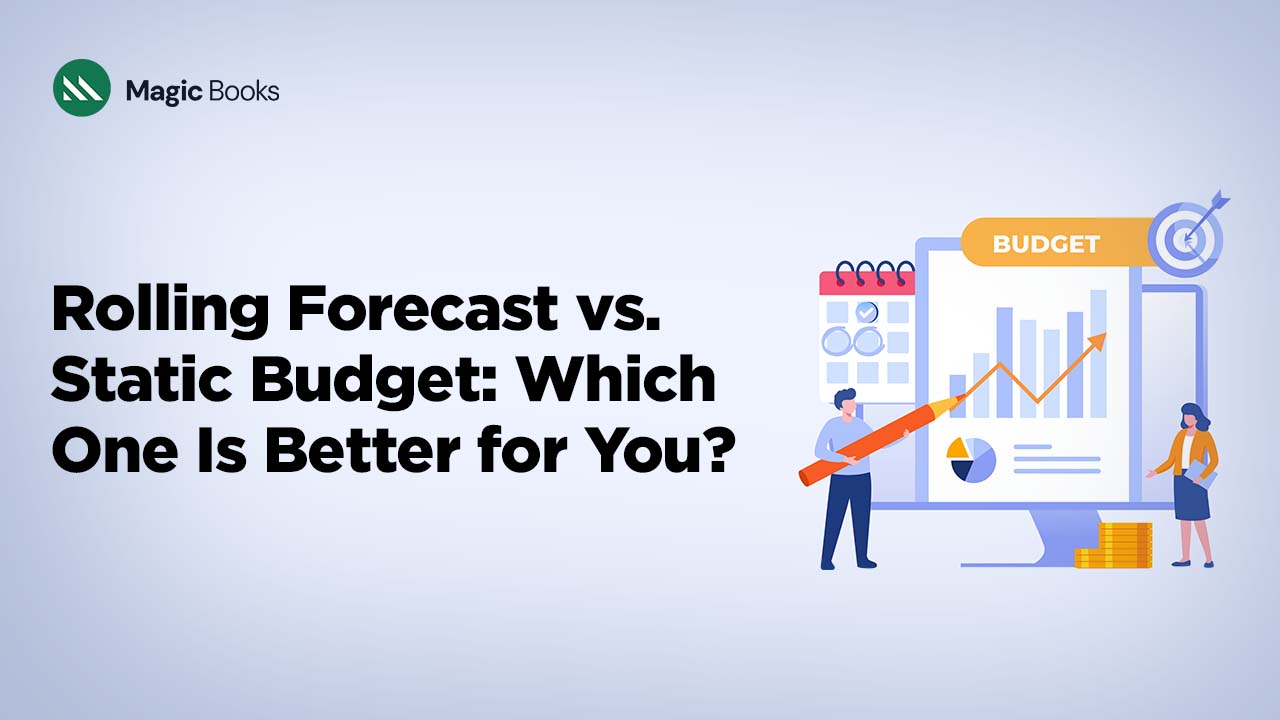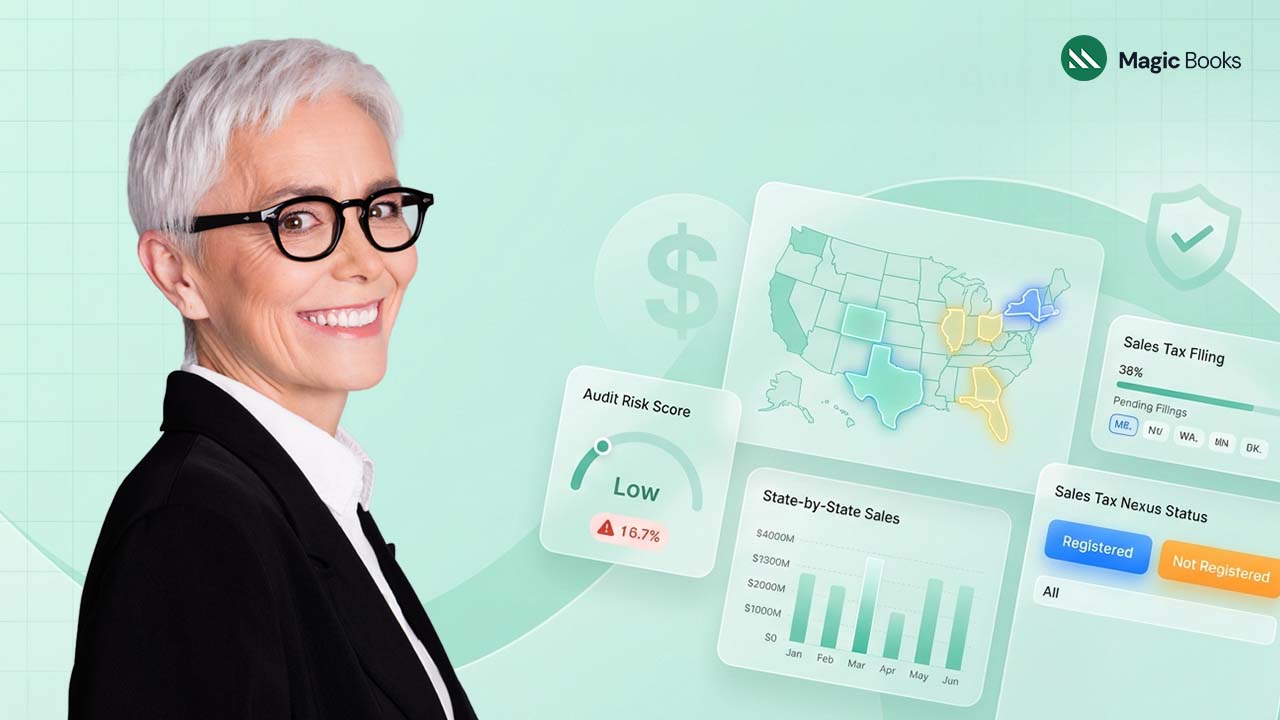Imagine two companies beginning a new budget year. One, a mid-sized tech firm, introduces a product that rapidly outstrips all sales projections. The other, a chain of retail outlets in the Midwest, suffers a random interruption in its supply chain as the holiday season begins to boom. Both companies use their budgeting to meet these surprise turns of events, but differently: the tech firm revises its estimates monthly, while the retailer uses a firm annual plan. When things go wrong, which method equips leaders with the adaptability and confidence to take courageous action?
At the heart of the debate is the rolling forecast-static budget binary. To financial planners, accountants, and bookkeepers who work for both B2B and B2C customers, the choice between the two can influence everything from managing cash flow to strategic planning. In the following guide, we’ll explain what both involve, their advantages and disadvantages, and provide real-world, research-driven practical tips so that you can make the optimal choice for your business or your clients. The most important factors are flexibility, resource requirements, precision, and managing risk.
What is a static budget?
Static budget refers to the budget that is drawn up for a specific time period—ordinarily a fiscal year—in a fixed form, irrespective of how actual business activities evolve. After it has been drawn up, the static budget acts as a reference benchmark against which actual outcomes are compared, making it an important tool in B2B as well as B2C companies, where control and predictability are of utmost concern (Vena 2023).
Creation of a static budget typically begins several months ahead of the new financial year. Finance departments diligently gather past information, estimate revenues and expenditures, and ensure the estimates are consistent with grand strategic objectives. Volume assumptions of sales, cost levels, and current market conditions are incorporated into the plan. When the budget is approved, it is set, providing a clear direction for expenditure as well as performance measurement. For most firms, the calendar cycle would be yearly, but others may desire to create static budgets every quarter or every six months.
Static budgets are best seen in stable-demand industries with predictable expenses—think utilities, government offices, or established manufacturers. Under those circumstances, the simplicity and clarity of a static budget render it a potent tool for cost control and accountability. However, its lack of flexibility is a drawback when business conditions fluctuate unpredictably because the plan doesn’t adapt to shifting conditions in real time (AccountingTools 2025).
So what is a rolling forecast?
A rolling forecast is a flexible planning instrument that always extends the horizon of planning by regularly updating forecasts at short intervals—usually monthly or quarterly—using the latest actual information and newest available market information. Unlike a static budget, which refreshes its assumptions for the entire duration, a rolling forecast “rolls forward” by eliminating the previous period and adding a new one, thus ensuring the forecast always covers a specified length of time in the future (Corporate Finance Institute 2023).
The availability of cloud-based FP&A and budgeting software has facilitated rolling forecasts to become more powerful and convenient. The sophisticated software automates the integration of data, facilitates scenario modeling, and enables real-time reporting, enabling finance teams to respond quickly to sales, expense, or external market changes (Deloitte 2024). For instance, when churn rates increase, a SaaS company can update the forecast immediately, as a retailer can recalculate inventory requirements following an unexpected breakdown in the supply chain.
Rolling forecasts are ideally applied to high-speed industries—tech, healthcare, or consumer goods—where responsiveness and the ability to accommodate shifting situations is critical. They allow organizations to match resources to reality as it exists, facilitate better financial planning, and promote a culture of forward-thinking decision-making (Deloitte 2022). The application of rolling forecasts, however, requires solid data foundations and cross-functional planning, as forecasts must be repeatedly updated and validated.
Key Differences and Decision Criteria:
The decision to use a rolling forecast or a static budget is based on many factors: agility, accuracy, resource requirements, executive approval, and the preparedness of the culture.
Rolling forecasts are where flexibility enters into play. Regularly updated, they enable the organization to quickly change direction as a result of changes in the market, regulation, or internal performance trends. Static budgets, on the other hand, can trap teams into stale assumptions, especially in dynamic settings (TechFunnel 2024).
Accuracy is also a key differentiator. Rolling forecasts use current data and can make projections more in line with the current moment. This can result in improved resource allocation and enhanced risk management. Static budgets, though helpful as a measure of performance, tend to lose relevance as the year goes on and assumptions drift further from reality (NextProcess).
Rolling forecasts require more resources. Keeping a forecast up to date requires more data gathering, analysis, and cross-functional involvement. Companies with few FP&A resources might find the convenience of the static budget appealing.
Executives’ commitment and organizational culture readiness are most essential. Executives must have a mindset for ongoing planning and flexibility for a rolling forecast. In companies where annual budgeting is part of the culture, making a shift to a rolling model might face resistance.
Utilize two mini case examples:
- A B2B services firm, famous for its IT consulting practice, implemented a rolling forecast when it was facing perpetual project delays and customer turnover that made its yearly budgets obsolete. By refining its forecasts on a monthly basis, the firm better managed its project staffing and cash flows but initially struggled with change management and data integration.
- A B2B retailer, on the other hand, used a static budget to manage cost in a season of sustained demand. Yet when a promotion by a competitor caused a sudden decline in sales, the retailer’s failure to act fast in response permitted surplus stock and the missing of revenue targets. This taught the management to introduce a pilot rolling forecast for the subsequent quarter.
The Strengths and Weaknesses of Each Approach:
Static budgets are fixed, simple to comprehend, and low in administrative costs. Static budgets provide a clear point of performance and are simple to convey throughout the organization. In organizations with stable operations, a static budget is a strong discipline-imposing tool and control of spending (Vena 2023). But in unstable markets, the risk of obsolescence is great. Where the results deviate from the planned expectation, static budgets can result in suboptimal decisions or lost opportunity. Managers can also be bound by the rigidity of the plan, which may deter them from being proactive in making adjustments (AccountingTools 2025).
Rolling forecasts, on the other hand, offer an incredible degree of responsiveness, enable scenario planning, and enable risk management. Organizations are able to identify new risks and opportunities sooner, better reallocate resources, and promote an agile culture by continuously revising their estimates (CashAnalytics 2025). IBM and Aberdeen research have documented that rolling forecasts improve the accuracy of budgeted revenues by some 14% compared to static approaches. Still, the process is not one that operates without flaws. Handling a rolling forecast can be complex, with integrated data systems, continuous team collaboration, and willingness to revise assumptions regularly. Some organizations are faced with “forecast fatigue” or information overload, especially if their processes have not been clearly defined (Wall Street Prep 2024).
Industry-Specific Use Cases:
- Although static budgets remain in application in financial services for cost containment and regulatory requirements, rolling forecasts are increasingly being adopted as organizations seek to manage market uncertainty and regulatory risk. A bank may apply a static budget at the branch level but a rolling forecast in the management of loan portfolio risk.
- Manufacturing firms prefer to use both methods. Static budgets set yearly goals for the production and capital spending, while rolling forecasts allow updating due to changed raw material prices or demand. For example, an auto parts manufacturer can use a rolling forecast to compensate for supply chain problems or modifications in customers’ orders.
- Merchants are more and more opting for rolling forecasts to finance inventory, promotions, and seasonal fluctuations in demand. A regional chain that updates its forecast monthly can respond faster to trends among consumers or supply disruptions than a competitor tied to a static plan.
- Technology firms, particularly SaaS companies, are helped by rolling forecasts in the case of sudden changes in customer acquisition expenses or churn. A SaaS CFO may prefer rolling forecasts in the event of increasing quarterly churn so that the company can make real-time adjustments in hiring, marketing, or product investments.
How to Know What Is Best for You:
Selecting between a rolling forecast and a static budget begins with evaluating the size of your organization, the resources available for planning, and the fluctuations in your revenue and expenses.
Smaller firms with limited FP&A staff or extremely predictable operations may be able to manage with a static budget. If you operate in a stable business environment and like simplicity, the static approach offers simplicity and ease of use.
If your company operates in a volatile market, is exposed to perpetual changes in demand or expenses, or already has a contemporary FP&A system, a rolling forecast may be the more suitable choice. Companies that update their most important business drivers every month and have the technology to include real-time data are best positioned to benefit from rolling forecasts.
A simple test of maturity: If you’re still manually updating forecasts in spreadsheet applications and refreshing drivers quarterly, you can begin by testing a rolling forecast for one business unit. If you already have cloud-based budgeting applications and refresh drivers monthly, you’re ready to transition to a complete rolling forecast.
Example:
In 2023, a mid-sized healthcare technology company took a bold step away from static budgeting and embraced rolling forecasting. The organization had grappled with the swift changes in customer demand and regulatory shifts that often rendered its annual budgets outdated within mere months. With the introduction of a rolling forecast, facilitated by a cloud-based FP&A platform, the finance team found the ability to update projections each month, seamlessly aligning resources with the ever-evolving market conditions.
Implementation wasn’t easy. Merging data from multiple business units meant new processes and executive sponsorship. But the payoff was high: forecasting accuracy improved 12%, and budgeting prep time was cut 50%. As the CFO put it in a press release, “Shifting to a rolling forecast has given us the flexibility to respond to market changes and make more informed decisions, more quickly. Our teams are more engaged, and we’re no longer caught off guard by unexpected changes” (FP&A Trends 2023).
The experience of the company is a wise lesson, though: while rolling forecasts do involve greater upfront investment in process and technology change, the payback in responsiveness and precision can be worth it—especially in companies where the only thing that doesn’t change is change.
Conclusion and Next Steps:
Rolling forecasts and static budgets each have their place in modern financial planning. Static budgets offer stability and simplicity and are best suited to organizations with stable processes and few planning tools. Rolling forecasts, made possible by cloud-based budget planning and FP&A software, provide the adaptability and accuracy needed to thrive in volatile markets. As you plan ahead to your next move, invest in setting your current budgeting cycle and assessing your organization’s readiness to change. Having a three-month rolling forecast or rolling out both simultaneously for a quarter can be helpful in providing insights while preserving the integrity of current processes. The best approach is one that is aligned with your business needs, planning maturity, and the capacity for implementing agility. What strategy is your company trying this year?



